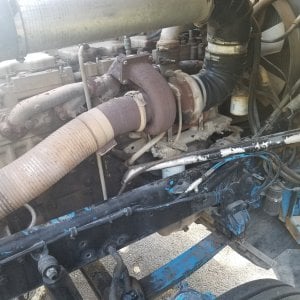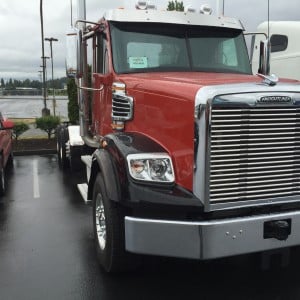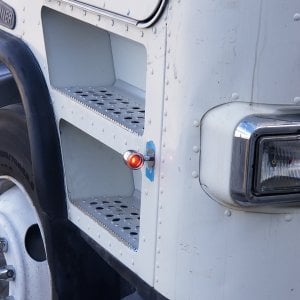The lifestyle of an Over-the-Road (OTR) driver often involves long hours behind the wheel, irregular schedules, and limited access to healthy food options. For those following a specific dietary regime like the ketogenic (keto) diet, the challenges are amplified. But, with some planning, the right tools, and a bit of culinary creativity, maintaining a keto diet as an OTR driver is entirely achievable. Let's delve into how you can cook keto meals right in your semi-truck.
Understanding the Keto Diet:
The keto diet is a low-carb, high-fat diet that aims to put your body into a state of ketosis, where it burns fat for energy instead of carbohydrates. A typical keto diet consists of 70-75% fats, 20% proteins, and only 5-10% carbs. This means your meals will primarily include meats, fish, eggs, dairy, nuts, and low-carb vegetables, while avoiding foods like grains, sugars, legumes, and high-carb fruits.
Choosing the Right Equipment:
Just like with general truck cooking, choosing the right cooking equipment is crucial. Space and power are typically limited in a truck, so compact, versatile appliances like a portable stove, electric skillet, slow cooker, or a mini fridge will be your best friends. These tools will allow you to store and prepare keto-friendly foods efficiently.
Meal Planning and Preparation:
Plan your meals ahead of time to avoid falling back on carb-loaded convenience food. A good practice is to create a weekly menu, accounting for all your meals and snacks for the week.
Consider foods that are easy to prepare, store, and have a longer shelf life. Eggs, for instance, are an excellent source of protein and can be boiled in advance for a quick snack or a salad add-on. Canned fish, such as tuna or salmon, are also a great source of protein and omega-3 fats, and they're ready to eat straight from the can.
One-pot or one-pan meals are perfect for cooking in your semi-truck. A simple stir-fry with your choice of meat, some bell peppers, broccoli, and a drizzle of olive oil can be cooked in an electric skillet. Slow-cooked dishes like beef stew (minus the potatoes) or chicken soup with plenty of low-carb vegetables can be prepared in a slow cooker while you're driving, ready to be served by the time you're taking a break.
Snacking Keto:
It's also crucial to have keto-friendly snacks handy. Consider stocking up on nuts and seeds, jerky (be sure to check for added sugars), cheese sticks, avocados, and low-carb protein bars. These snacks require no preparation and can help you maintain your energy and focus on the road.
Food Storage and Cleanup:
Keeping perishable foods like meat, fish, eggs, and low-carb dairy products fresh might be a challenge. But a mini-fridge or a good quality cooler can help. Non-perishable canned goods, such as tuna, chicken, and sardines, are also excellent to have on hand.
Cleaning up after cooking in a semi-truck might be a challenge, but it's important for hygiene and to keep pests away. Have cleaning supplies like dish soap, sponges, and trash bags readily available. If you want to reduce washing up, consider using disposable plates and cutlery, or for a more sustainable option, invest in camping dishware that's easy to clean.
Staying on the keto diet while working as an OTR driver is not without its challenges, but it is certainly doable with some organization and creativity. The benefits of maintaining a healthy eating pattern on the road include improved overall health, more consistent energy levels, and even potentially better job performance. So equip your cab with the right tools, plan your meals, stock up on keto-friendly snacks, and enjoy the journey of cooking keto on the open road.
Understanding the Keto Diet:
The keto diet is a low-carb, high-fat diet that aims to put your body into a state of ketosis, where it burns fat for energy instead of carbohydrates. A typical keto diet consists of 70-75% fats, 20% proteins, and only 5-10% carbs. This means your meals will primarily include meats, fish, eggs, dairy, nuts, and low-carb vegetables, while avoiding foods like grains, sugars, legumes, and high-carb fruits.
Choosing the Right Equipment:
Just like with general truck cooking, choosing the right cooking equipment is crucial. Space and power are typically limited in a truck, so compact, versatile appliances like a portable stove, electric skillet, slow cooker, or a mini fridge will be your best friends. These tools will allow you to store and prepare keto-friendly foods efficiently.
Meal Planning and Preparation:
Plan your meals ahead of time to avoid falling back on carb-loaded convenience food. A good practice is to create a weekly menu, accounting for all your meals and snacks for the week.
Consider foods that are easy to prepare, store, and have a longer shelf life. Eggs, for instance, are an excellent source of protein and can be boiled in advance for a quick snack or a salad add-on. Canned fish, such as tuna or salmon, are also a great source of protein and omega-3 fats, and they're ready to eat straight from the can.
One-pot or one-pan meals are perfect for cooking in your semi-truck. A simple stir-fry with your choice of meat, some bell peppers, broccoli, and a drizzle of olive oil can be cooked in an electric skillet. Slow-cooked dishes like beef stew (minus the potatoes) or chicken soup with plenty of low-carb vegetables can be prepared in a slow cooker while you're driving, ready to be served by the time you're taking a break.
Snacking Keto:
It's also crucial to have keto-friendly snacks handy. Consider stocking up on nuts and seeds, jerky (be sure to check for added sugars), cheese sticks, avocados, and low-carb protein bars. These snacks require no preparation and can help you maintain your energy and focus on the road.
Food Storage and Cleanup:
Keeping perishable foods like meat, fish, eggs, and low-carb dairy products fresh might be a challenge. But a mini-fridge or a good quality cooler can help. Non-perishable canned goods, such as tuna, chicken, and sardines, are also excellent to have on hand.
Cleaning up after cooking in a semi-truck might be a challenge, but it's important for hygiene and to keep pests away. Have cleaning supplies like dish soap, sponges, and trash bags readily available. If you want to reduce washing up, consider using disposable plates and cutlery, or for a more sustainable option, invest in camping dishware that's easy to clean.
Staying on the keto diet while working as an OTR driver is not without its challenges, but it is certainly doable with some organization and creativity. The benefits of maintaining a healthy eating pattern on the road include improved overall health, more consistent energy levels, and even potentially better job performance. So equip your cab with the right tools, plan your meals, stock up on keto-friendly snacks, and enjoy the journey of cooking keto on the open road.













